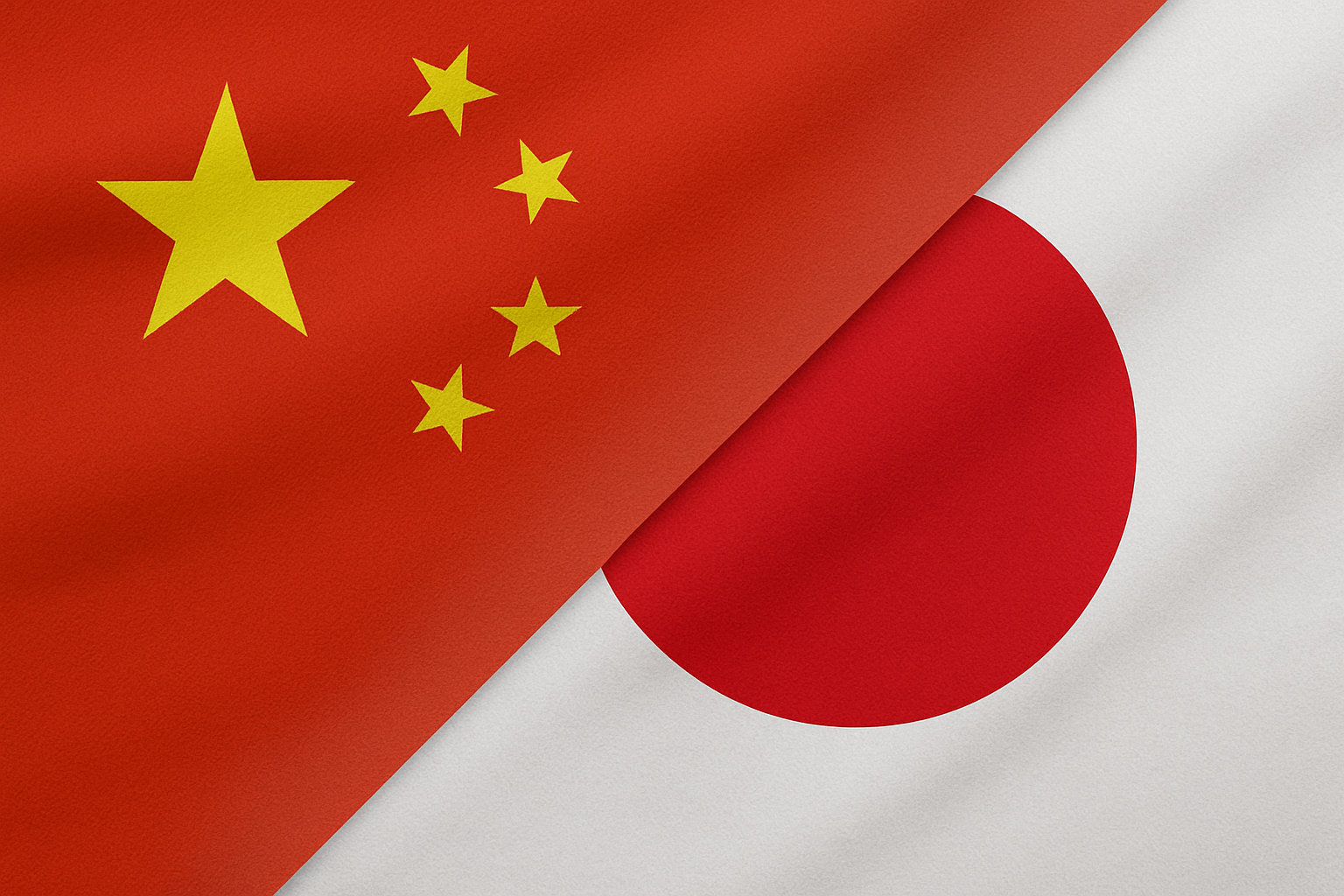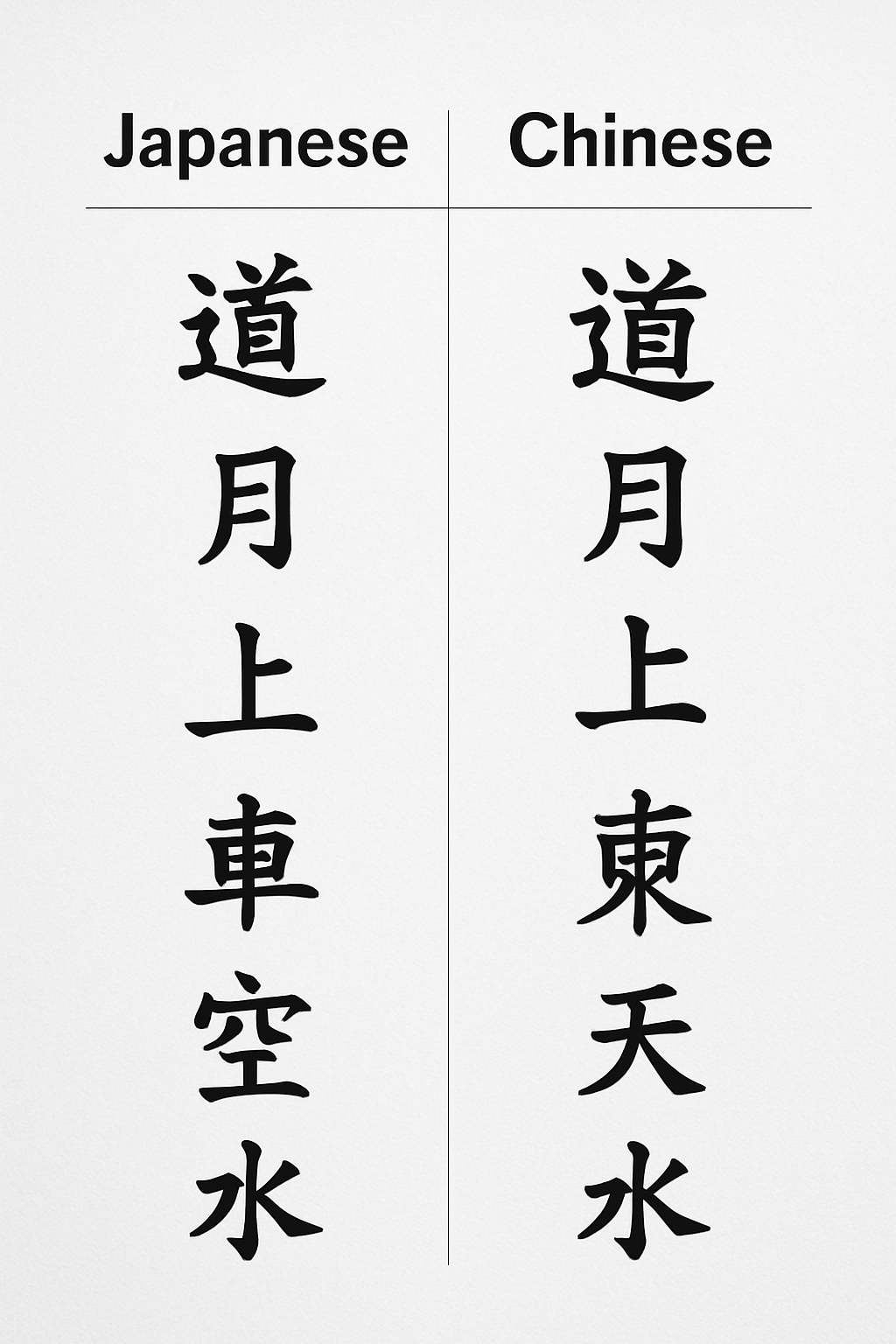How to Tell the Difference Between Chinese and Japanese Writing, Grammar, and Pronunciation
To an outsider, Chinese and Japanese languages may appear or sound similar because of their shared characteristics and a shared origin. But if you keenly examine them, you will notice several differences, along with some similarities. The two languages are rich in history, cultural depth, and linguistic complexity, shaping how their speakers think, express themselves, and relate to others.
Learning the differences between Chinese and Japanese gives you insights into what to expect when working with each language. This article compares the two languages, highlighting key differences in writing systems, pronunciation, and grammar.

Overview of Chinese
The Chinese language is among the oldest languages on earth, with approximately 1.3 billion speakers spread out across Mainland China, Singapore, and Taiwan. This translates to about 16% of the world population as of 2025. Keep in mind that Chinese is not a single language but a group of related language dialects. Mandarin is the commonly used Chinese dialect, especially in education, media, and administration.
Spoken and written Chinese are unique compared to other languages like Japanese. To clarify, its writing system is based on characters, while the meaning of words is pegged to tone, structure, and context. This shows the depth of its linguistics.
Overview of Japanese
Japanese is one of the two languages in the Japonic language family. It is used in the main islands of Japan by about 120 million people. Japanese is also known as a script-based language since its writing system uses three main scripts, the Kanji (Chinese characters), Hiragana, and Katakana.
The language evolved distinctly, regardless of its influence from Chinese. The vocabulary and writing of Japanese are borrowed from Chinese, but its grammar is quite different.
Differences in Writing Systems Between Chinese and Japanese
Both Chinese have defined and well-documented writing systems that dictate how each language is represented using symbols and characters. The writing systems of the two languages have evolved over time, and they are vastly different.
Chinese Writing Systems
Chinese has a specific writing system that uses special characters called Hanzi, with each having a distinct pronunciation and meaning.
There are traditional and simplified types of Chinese characters:
- Traditional characters: These are the older and more complex characters used across Taiwan and Hong Kong.
- Simplified characters: Adapted from the traditional Hanzi by reducing the strokes for more simplified writing. These ones are used across Mainland China and Singapore.
When you look at Chinese writing, the characters are easy to spot because of their block-like structure made up of distinct strokes. Just like English letters look different in bold or cursive fonts, Chinese characters can appear in various typefaces, but their basic shape stays the same, which helps you recognize them.
Japanese Writing Systems
The Japanese writing system is more complex than that of Chinese. To start with, Japanese writing uses a mix of three scripts, Kanji, Hiragana, and Katakana. Think of scripts as sets of symbols with different roles. For instance, in a language like English, which uses the alphabet, scripts would be different alphabets in one word, with each serving a different purpose. Sounds complicated, right? Let’s break it down.
- Kanji: These are characters adopted from the Chinese language that carry the same meaning as it but are pronounced differently in Japanese. Some Kanji characters can have a Chinese (On’yomi) and a Japanese (Kun’yomi) reading.
- Hiragana: This is known as a syllabic script, meaning it represents a full syllable, not a single sound. Hiragana scripts are used for native Japanese words, and they have a simpler curvature than Kanji.
- Katakana: A Katakana is also a syllable-based character in Japanese, but is used for words loaned from other languages and fields. In terms of appearance, they are sharper compared to Hiragana.
Evidently, Japanese is a much harder language to learn than Chinese. Having to differentiate between the sound and meaning of a word wouldn’t come naturally, especially for people whose first language is English.
Certified academic translators understand terminology, historical contexts, relevance, and other nuances machines miss. This makes them indispensable in academic translations.

Grammatical Differences Between Chinese and Japanese
The grammar of a language tells you how words are stitched together to form meaning. Chinese and Japanese languages have different grammar rules that speakers and writers follow to communicate.
Chinese Grammar and Sentence Structure
Just like English, the Chinese language uses a Subject-Verb-Object (SVO) word order. This makes it easier to learn as compared to other languages that use a more complicated order.
However, in Chinese, nouns do not change form based on number or gender. Also, the language does not use conjugations for verbs. This makes the translation from languages like English to Chinese a challenge for non-native speakers.
Japanese Grammar Rules
The major difference between Chinese and Japanese is that Japanese uses a SOV while Chinese uses an SVO word order. The absence of a verb at the end of a sentence forces the language to use a particle and a suffix to complete the sentence. These ending words can be used to show politeness, tense, or role in the sentence.
Differences Between Chinese and Japanese Pronunciation
Chinese and Japanese have different pronunciations, which influence the meaning of a word. Let’s see how the two languages compare.
Chinese Pronunciation
In Chinese, if you vary the tone when pronouncing certain words, you change their meaning completely. This is because Chinese is a highly tonal language where speakers have to be aware of the correct tone to use to convey meaning. In total, Mandarin dialect has four tones that express different meanings of the same word.
The tonal variables for different syllables make Chinese harder to learn, especially for English speakers.
Japanese Pronunciation
Unlike Chinese, Japanese has a more straightforward pronunciation due to the lack of tonal influence on meaning. Still, speakers use pitch to change the meaning of words when emphasis is put on specific syllables. Most English speakers would have an easier time learning Japanese than they would with Chinese because of its directness in pronunciation.
Get Accurate Translations for Asian Languages

The Language Doctors are experienced in the translation and interpretation of Asian languages like Japanese and Chinese. Our team of experts has experience in technical fields like law, academia, and health, where expertise and professionalism are non-negotiable. Contact us for fast, affordable, and credible translation services if you are looking for an accurate translation of legal documents, health records, or any other material.


